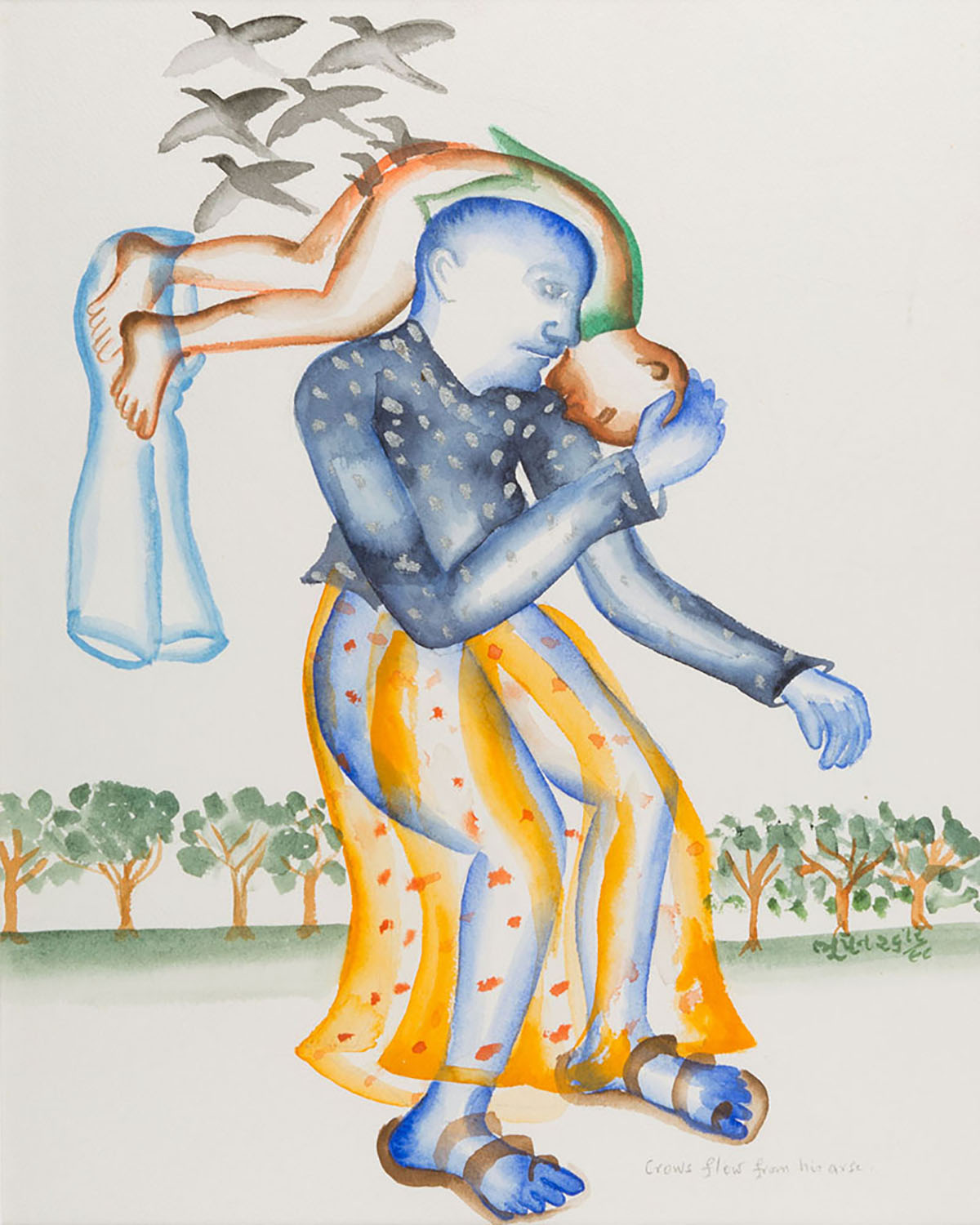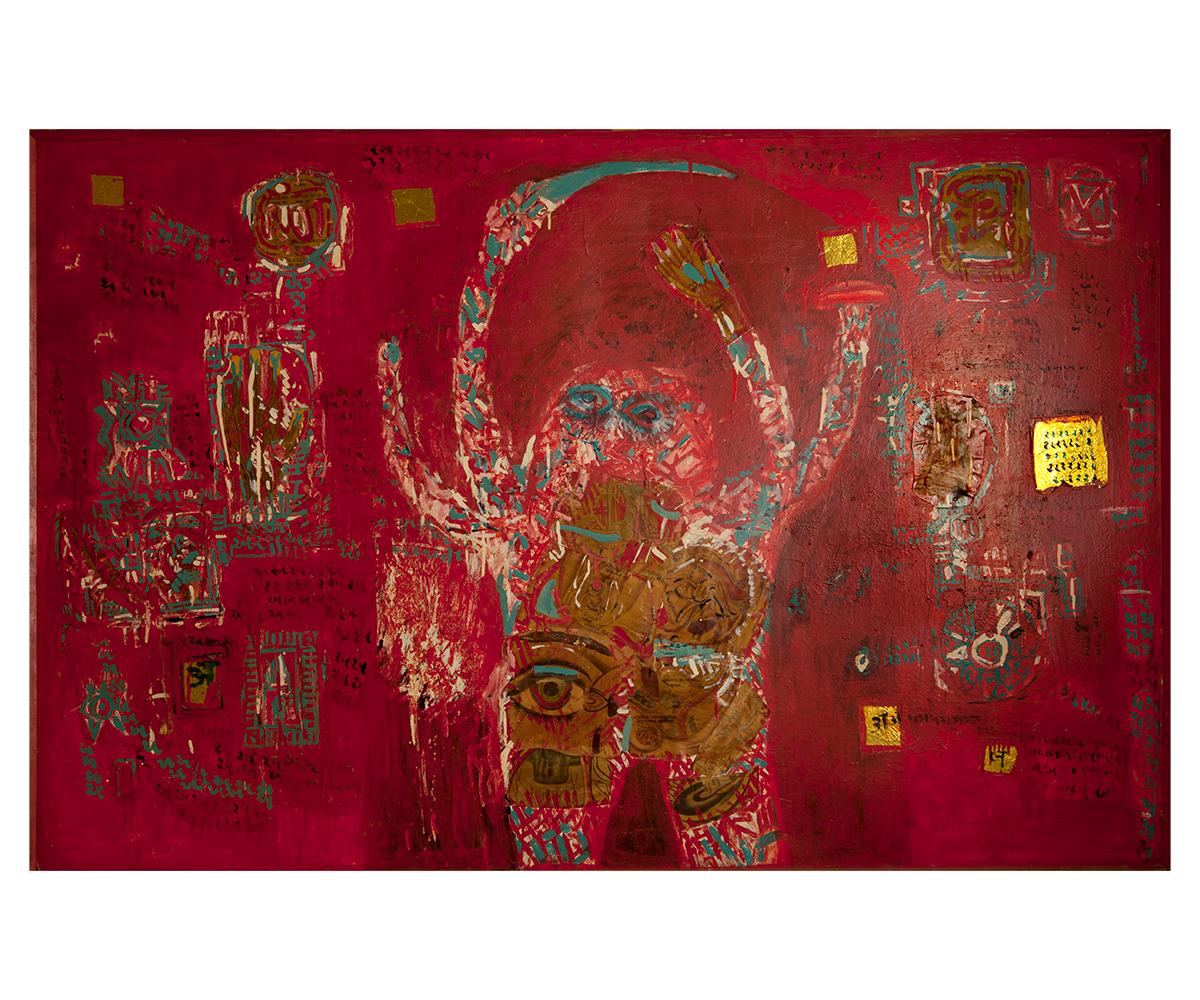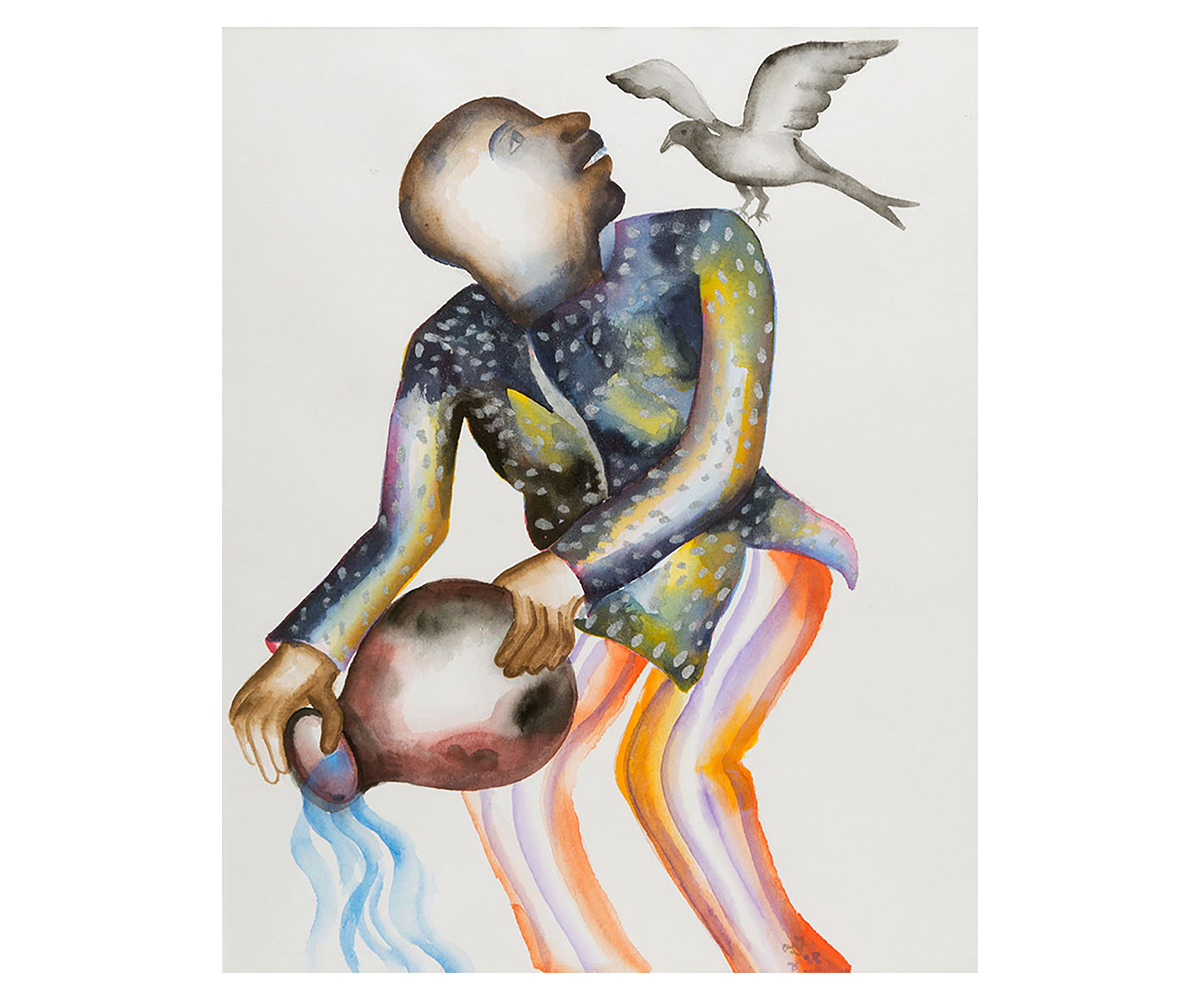ARTICLE
Bhupen Khakhar
Most of Khakhar’s works are characterised by the spontaneous application of watercolours and the layering of oil paints. He also experimented with various mediums, including ceramic, glass and installation. His works from the 1980s and ’90s are characterised by looser brushstrokes and autobiographical subjects, often featuring contemporary artists and playwrights, as well as Khakhar’s partners. He was interested in narration, performance and theatre, writing and producing several theatre plays and illustrating Salman Rushdie’s limited-edition copies of Two Stories (1989) using linocut and woodcut prints. In 1983, the Arts Council of Great Britain released a documentary titled Messages from Bhupen Khakhar. Khakhar’s work was also featured in a film by Arun Khopkar called Figures of Thought (1989), which explored his artistic practice along with those of Vivan Sundaram and Nalini Malani.
Khakhar was awarded the Padma Shri in 1984. His work has been shown in exhibitions across India and internationally, including at the Lalit Kala Akademi (1968); Rabindra Bhavan, New Delhi (1973); Art Heritage, New Delhi (1977); Jehangir Art Gallery, Mumbai (1981); the Sao Paulo Biennale (1969); the Institute of Contemporary Arts, London (1979); and the Tokyo Biennale (1984). Retrospectives of his work were also held at the National Gallery of Modern Art, Mumbai (2003); the Tao Art Gallery, Mumbai (2004); Gallery Chemould (now Chemould Prescott Road), Mumbai (2005); and Tate Modern, London (2016). His works are held in the collections of the Victoria and Albert Museum, London; The Museum of Modern Art, New York; and the National Gallery of Modern Art, New Delhi.
Khakhar died in 2003 in Vadodara.
Bibliography
Our website is currently undergoing maintenance and re-design, due to which we have had to take down some of our bibliographies. While these will be re-published shortly, you can request references for specific articles by writing to hellomapacademy@map-india.org.









